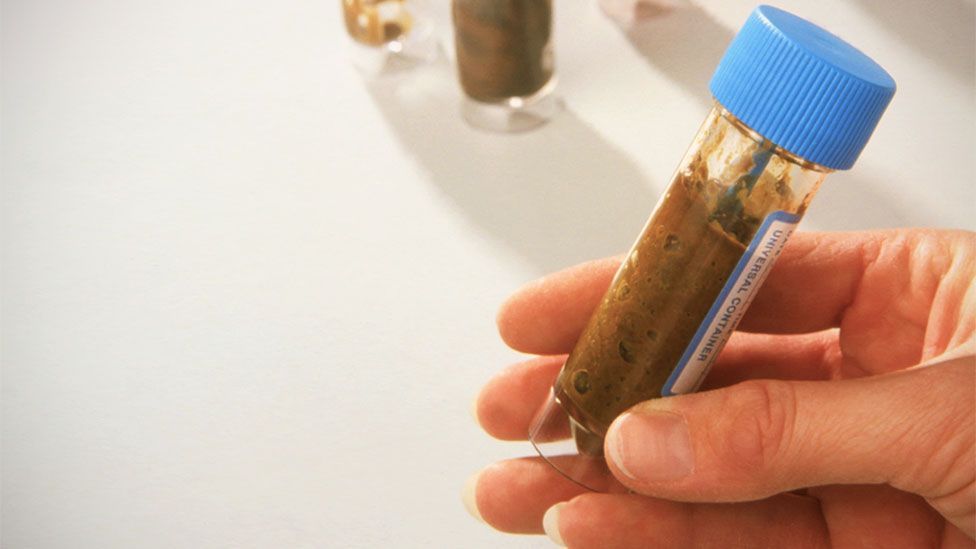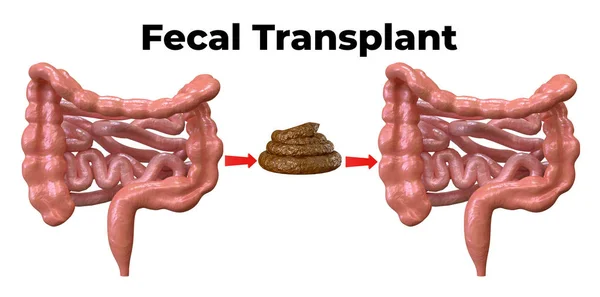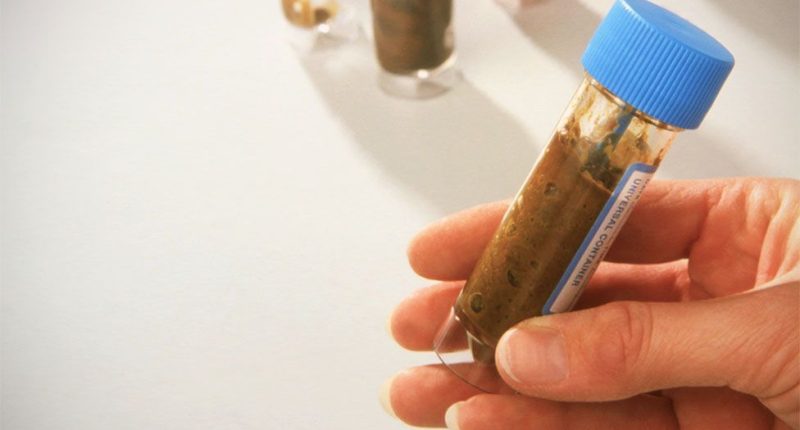Experts warn against DIY faecal transplants side Effect Is dangerous as popular trend poses ‘significant risks’

- Faecal microbiota transplants (FMT) are a medical procedure that involves transferring poo or stool from a healthy donor to a patient’s gastrointestinal tract.
- FMT is an effective treatment for recurrent Clostridium difficile (C. diff) infection.
- However, there is a growing trend of people performing DIY FMT at home.
- Experts warn that DIY FMT is dangerous and can lead to serious infections.
- FMT should only be performed by a qualified medical professional.
What is faecal microbiota transplant (FMT)?
FMT is a medical technique wherein stool from a healthy donor is transferred into the gastrointestinal system of a patient. This method is believed to be effective by replenishing the gut’s bacterial balance, aiding in the treatment of various ailments, including infections caused by C. diff.
Why is DIY FMT dangerous?
There are multiple reasons why undertaking FMT on your own is perilous. Firstly, verifying the safety of the donor’s stool presents a challenge; it may harbor dangerous bacteria or viruses that could infect the recipient. Secondly, the method of administering the stool carries inherent dangers. Incorrect administration could result in harm to the intestines or lungs.
What are the risks of DIY FMT?
Attempting to perform fecal microbiota transplantation (FMT) without professional guidance is fraught with hazards that could lead to significant health issues. Below are some risks that come with DIY FMT:
Transmission of infections: The stool used for FMT can harbor harmful bacteria, viruses, and parasites that can be transmitted to the recipient. This can lead to severe infections, including Clostridium difficile (C. diff) infection, which can cause life-threatening diarrhea.
Imbalance of gut bacteria: FMT aims to restore the balance of gut bacteria, but DIY methods may not achieve this balance. Improper screening of the donor’s stool or mishandling of the fecal material can introduce harmful bacteria or disrupt the recipient’s existing gut microbiome, worsening their condition.
Damage to the intestines or lungs: The administration of FMT can cause damage to the intestines or lungs, especially if not performed by a trained medical professional. Improper insertion of the nasogastric tube or enema can lead to perforation or other complications.
Unexpected weight gain or loss: There have been reports of recipients experiencing unexpected weight gain or loss after FMT. The effects of FMT on metabolism and weight regulation are still being studied.
Allergic reactions: In rare cases, recipients may experience allergic reactions to the donor’s stool, leading to symptoms like hives, rash, or anaphylaxis.
Uncertain long-term effects: The long-term effects of FMT are still being investigated. There is a possibility of unintended consequences, such as the transfer of genetic material or the development of chronic conditions.
Lack of medical supervision: DIY FMT eliminates the crucial role of medical supervision and monitoring. Without proper guidance and follow-up care, recipients may not be aware of potential complications or may not receive timely treatment for adverse reactions.
Ethical concerns: DIY FMT raises ethical concerns regarding informed consent, the use of human material, and the potential exploitation of donors.
In conclusion, DIY FMT is a dangerous practice with significant risks and potential for serious harm. It is strongly advised to seek professional medical advice and undergo FMT only under the guidance of qualified healthcare providers.
What should I do if I am considering FMT?

If you are considering fecal microbiota transplantation (FMT), it is crucial to consult with a qualified healthcare professional to discuss your options and determine if FMT is the right treatment for you. Here’s a step-by-step guide on what to do:
Talk to your doctor: Initiate a conversation with your primary care physician or a gastroenterologist about your symptoms, concerns, and interest in FMT. They can assess your condition, evaluate your medical history, and determine if FMT is an appropriate treatment option for your specific condition.
Gather information: Obtain comprehensive information about FMT from reliable sources, such as the American College of Gastroenterology or the International Fecal Transplant Society. These resources provide detailed explanations of FMT, its benefits, risks, and potential side effects.
Understand the risks and benefits: Carefully consider the potential risks and benefits of FMT. Discuss these with your doctor to ensure you fully understand the implications of the procedure and make an informed decision.
Discuss donor selection: If FMT is deemed appropriate, discuss the process of donor selection with your doctor. They will explain the criteria for selecting a donor, the screening process, and the importance of donor safety.
Read Related Also: 9 Tastiest Weight Loss Meals That Are 500 Calories or Less
Plan the procedure: Once you decide to proceed with FMT, work with your doctor to plan the procedure. They will discuss the administration method (nasogastric tube, colonoscopy, enema), the frequency of treatments, and any necessary preparation.
Seek ongoing care: After FMT, maintain regular communication with your doctor to monitor your progress, address any side effects, and assess the effectiveness of the treatment. They may recommend follow-up FMT sessions or other treatments as needed.
Remember, FMT is a medical procedure that should only be performed under the supervision of qualified healthcare professionals. Do not attempt DIY FMT, as it can lead to serious health complications.
What is the NHS guidance on FMT?
The NHS guidance on faecal microbiota transplantation (FMT) states that the procedure should only be performed by a qualified medical professional. The guidance also states that the stool from the donor should be screened for harmful bacteria and viruses. This is to ensure that the recipient does not develop an infection as a result of the procedure.
The NHS guidance also states that FMT should only be used to treat certain conditions. These conditions include:
- Recurrent Clostridium difficile (C. diff) infection
- Ulcerative colitis
- Crohn’s disease
FMT is not a cure for these conditions, but it can help to improve the symptoms.
The NHS guidance also states that FMT should only be used as a last resort. This is because there are other treatments that can be used to treat these conditions. However, if these treatments have not been successful, then FMT may be an option.
If you are considering FMT, you should talk to your doctor. They can discuss the risks and benefits of the procedure with you and decide if it is right for you.
Here are some of the risks of FMT:
- Infection
- Bloating
- Gas
- Diarrhea
- Constipation
The NHS guidance states that these side effects are usually mild and go away on their own. However, if you experience any serious side effects, you should see your doctor immediately.
The NHS guidance also states that the long-term effects of FMT are unknown. This is because FMT is a relatively new treatment. However, researchers are continuing to study the long-term effects of FMT.
What is the conclusion of the article?
The article concludes that DIY FMT is a dangerous practice that should not be attempted. It highlights the significant risks associated with DIY FMT, including the transmission of infections, imbalance of gut bacteria, damage to the intestines or lungs, unexpected weight gain or loss, allergic reactions, and uncertain long-term effects. The article emphasizes the importance of seeking professional medical advice and undergoing FMT only under the guidance of qualified healthcare providers.
DIY FMT side effects
DIY fecal microbiota transplantation (FMT) is a dangerous practice that can lead to serious side effects and health complications. It is important to consult with a qualified healthcare professional if you are considering FMT, as they can assess your individual needs and determine if FMT is the right treatment for you.
Potential side effects of DIY FMT include:
- Infection: The stool used for FMT can harbor harmful bacteria, viruses, and parasites that can be transmitted to the recipient. This can lead to severe infections, including Clostridium difficile (C. diff) infection, which can cause life-threatening diarrhea.
- Imbalance of gut bacteria: FMT aims to restore the balance of gut bacteria, but DIY methods may not achieve this balance. Improper screening of the donor’s stool or mishandling of the fecal material can introduce harmful bacteria or disrupt the recipient’s existing gut microbiome, worsening their condition.
- Damage to the intestines or lungs: The administration of FMT can cause damage to the intestines or lungs, especially if not performed by a trained medical professional. Improper insertion of the nasogastric tube or enema can lead to perforation or other complications.
- Unexpected weight gain or loss: There have been reports of recipients experiencing unexpected weight gain or loss after FMT. The effects of FMT on metabolism and weight regulation are still being studied.
- Allergic reactions: In rare cases, recipients may experience allergic reactions to the donor’s stool, leading to symptoms like hives, rash, or anaphylaxis.
- Uncertain long-term effects: The long-term effects of FMT are still being investigated. There is a possibility of unintended consequences, such as the transfer of genetic material or the development of chronic conditions.
In addition to the potential physical side effects, DIY FMT can also have psychological and emotional consequences. Recipients may experience anxiety, fear, or guilt about the procedure, especially if they are not fully informed about the risks and benefits. They may also feel isolated or stigmatized, as FMT is not a widely understood or accepted treatment.
Resources:
1. Faecal Microbiota Transplant (FMT): NHS
2. Rise of the DIY faecal transplants: Experts warn trend that sees people ingest others’ poo in hopes of curing ailments has ‘significant risks’: DailyMail
Note: This article is written based on scientific evidence found by the Coza24.com team. Sources are duly referenced with keywords hyperlinked to source websites and are clickable for reference.
Frequently Asked Questions (FAQs)
What Are Faecal Transplants?
Faecal transplants, also known as Fecal Microbiota Transplants (FMT), involve the process of transplanting fecal bacteria and other microbes from a healthy donor into another person’s gastrointestinal tract for the purpose of restoring the recipient’s gut flora. This procedure is primarily used to treat Clostridium difficile infection (CDI) not responsive to standard treatments.
Why Do Experts Warn Against DIY Faecal Transplants?
Risk of Infection
Experts warn that DIY faecal transplants carry the risk of transmitting infectious diseases. Without proper screening of donor stool, dangerous pathogens could be transferred to the recipient.
Potential for Misdiagnosis
Self-diagnosing and attempting to treat conditions without professional guidance might lead to overlooking or misdiagnosing underlying health issues.
Improper Technique
The lack of a sterile environment and precise techniques can lead to complications, worsening the health condition rather than improving it.
What Are The Side Effects of Faecal Transplants?
Short-term Side Effects
- Abdominal discomfort
- Bloating and gas
- Diarrhea
- Constipation
- Fever
Long-term Side Effects
While long-term side effects are rare when the procedure is performed under medical supervision, potential risks include:
- Unintended changes in weight
- Changes in mood or behaviour
- Autoimmune diseases
Can Faecal Transplants Cause Illness?
Yes, when not conducted under strict medical supervision, faecal transplants can transmit infectious diseases and cause illnesses due to the introduction of harmful pathogens into the recipient’s gut.
Are There Guidelines for Safe Faecal Transplants?
Yes, there are strict guidelines and protocols for performing safe faecal transplants, including:
- Comprehensive screening of donor stool for pathogens
- Ensuring the recipient’s compatibility
- Maintaining sterile conditions during the procedure
- Close monitoring of the recipient after the transplant
These guidelines are designed to minimize risks and ensure the health and safety of the recipient.
Is It Legal to Perform a DIY Faecal Transplant?
The legality of performing a DIY faecal transplant varies by country and region. In many places, the practice is not explicitly illegal but is strongly advised against by health authorities due to the associated health risks. Always consult with healthcare professionals and consider legal implications before attempting any medical procedures at home.
What Should I Do If I’m Considering a Faecal Transplant?
If you’re considering a faecal transplant, it’s crucial to consult with a healthcare professional who can provide guidance based on your medical history and current health condition. They can also inform you about the procedure’s risks and benefits, potential side effects, and the safest way to pursue treatment if needed.







2 comments
Comments are closed.